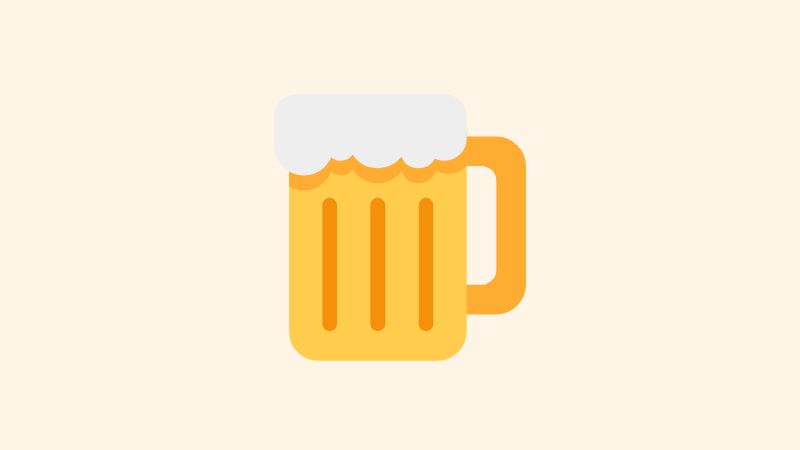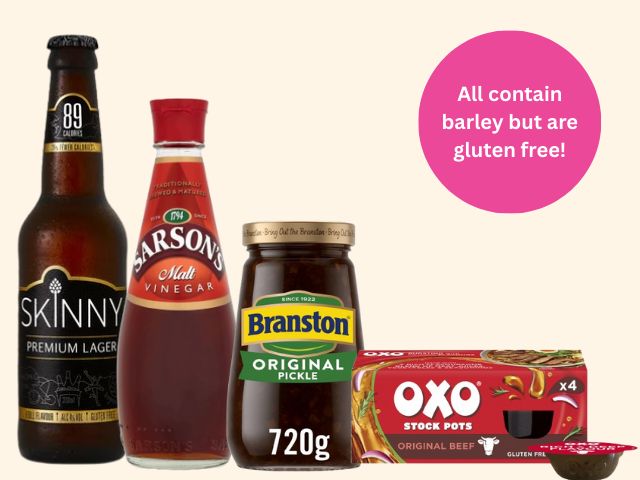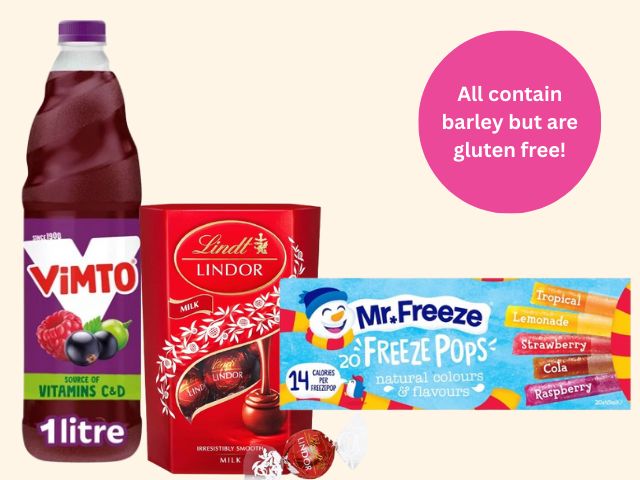Barley Malt Extract
What is barley malt extract and when is it safe for people who have coeliac disease


⚡ Fast Facts:
Gluten free barley malt extract or barley malt vinegar is safe for:
✅ People with coeliac disease
✅ Those with a gluten intolerance/sensitivity
✅ Individuals avoiding gluten for other medical reasons
Gluten free barley is NOT safe for:
❌ People with a barley allergy
❌ Anyone advised to completely avoid barley for other medical reasons
🍺 Understanding Gluten Free Barley
Have you ever panicked after spotting 'barley' on the ingredient list of a product clearly labelled 'gluten free'? You’re not alone - and the good news is, in most cases, there's no need to worry. Common examples include:
- 🍶 Sarson's Malt Vinegar - Contains barley malt vinegar & barley malt extract
- 🥒 Branston Pickle - Contains barley malt vinegar & roasted barley malt extract
- 🍻 Most gluten free beer including Peroni, Jubel, Daura Damm - Contains barley
- 🟫 OXO Stock Pots - Contain roasted barley malt extract
If you have coeliac disease or follow a gluten free diet, these products are safe to eat - as long as the packaging is clearly labelled 'gluten free'.
ℹ️ (Sarson's and Branston have the gluten free declaration on new packaging - old stock won't state gluten free but are still safe for consumption as the recipe hasn't changed, Mizkan just had their recipes tested.)

❓ What Is Gluten Free Barley?
Barley naturally contains gluten, which is one of the key proteins that trigger reactions in people with coeliac disease and gluten intolerance. It is also the ‘B’ in the BROW acronym (Barley, Rye, Oats, and Wheat). However, through special processing methods, the gluten is either removed or reduced to below 20 parts per million (ppm) - the legal threshold for gluten free labelling. This makes it safe for those who need to avoid gluten.
However, whilst gluten free barley does not contain gluten, it still contains other barley components, which means it is not safe for individuals with a barley allergy or intolerance. Even if the gluten has been removed, the word 'barley' will still be highlighted in the ingredients list to alert those with a barley allergy or intolerance.
🏭 How is Gluten Removed from Barley?
Manufacturers use processes like:
- Enzymatic breakdown
- Filtration
- Dilution with water or other ingredients
These reduce gluten levels without affecting flavour, which is why products like gluten free beer can still contain barley but remain legally safe for coeliacs.
🤯 How Do I Know if the Barley is Gluten Free?
If a product is labelled 'gluten free', you can feel confident it meets strict legal standards (less than 20 ppm of gluten). In the UK, these regulations are enforced by the Food Standards Agency, so certified gluten free products are suitable for people with coeliac disease.
However, if you have a barley allergy or non-coeliac barley intolerance, you'll need to go a step further:
- Carefully check the ingredients lists for 'gluten free barley' on gluten free products
- Avoid anything that lists 'barley' in the ingredients
- Look for additional allergy information on the label
👉🏽 Read more about certified gluten free labelling here
Although barley malt extract and vinegar are often used in such small amounts that the final product could be considered gluten free, you can’t assume this unless the manufacturer has officially tested the product and confirmed its gluten free status.
🫷🏼 The Exceptions to the Rule
Odd Ones Out – When Packaging Doesn’t Mention Gluten Free
Sometimes, a product is safe - but doesn't say 'gluten free' on the packaging. This might be due to cost, outdated packaging, or frequent recipe changes. A few examples:
🍫 Lindt Chocolate
Many Lindt chocolates contain a safe level of gluten free barley, but there is no gluten free label on the packaging. However, their website states:
"When barley malt extract is the only gluten-containing cereal ingredient in the ingredient list, the quantity used in the recipe is very low therefore gluten level is below 20 mg/kg (which is "gluten-free" according to EU regulations and Codex Alimentarius)."
💜 Vimto
The drink contains ‘barley malt’ but does not have a gluten free label. However, their website states:
"There may be a very small amount of gluten which carries through from the barley malt during manufacturing. But, the level is so low that it wouldn’t be considered to contain gluten (20 parts per million). So, Original Vimto is classed as gluten-free, while our other Vimto drinks flavours are completely free of gluten."
🍭 Mr Freeze
The ice pops contain 'barley malt extract' but there is no gluten free statement on the packaging. Instead, under the FAQ's on their website, they state:
"Even though some contain Barley Malt they are all <20PPM gluten, making them suitable for a Coeliac / Gluten Free diet. This includes all the Freezepop variants. The Jubbly products contain no gluten containing ingredients."

😒 Why is this a problem?
Whilst it’s great to learn that these products are gluten free, if this information isn’t on the packaging, it becomes harder to
- Track recipe changes over time
- Identify safe products quickly
- Feel confident as a consumer
Brands are encouraged to clearly label gluten free on packaging - not just on websites.
🤷🏼♀️ Who Can and Can’t Eat Gluten Free Barley?
✅ Safe for:
- People with coeliac disease
- Those with non-coeliac gluten sensitivity
- Anyone avoiding gluten for other medical or lifestyle reasons
❌ Not safe for:
- People with a barley allergy
- Those with a barley intolerance unrelated to gluten
- Individuals advised by a healthcare professional to avoid all forms of barley
👉🏻 Read more about the differences between coeliac disease and non-coeliac gluten sensitivities here
If you react to a gluten free product with barley, it may be due to barley itself, not gluten. Some people are sensitive to fermented or malted foods, which can cause digestive issues unrelated to coeliac disease.
If in doubt, speak to a dietitian or healthcare professional.
💡 Reminder
You might often hear “Product X contains barley, but I don't react to it and I'm coeliac so it's safe”.
Whilst they may mean well, this is misleading and potentially dangerous. Coeliac disease has no levels of sensitivity - just different symptom severity. Even if someone doesn’t notice outward symptoms, gluten can still cause internal damage.
👉🏾 Read more here about why gluten sensitivity isn’t a scale for those with coeliac disease
🎯 Quick Recap
In the UK, if a product is labelled gluten free, it is safe for coeliacs - even if it contains barley malt extract or vinegar. Always check the packaging, don't assume a product is gluten free unless it's clearly stated. There are some exceptions where the packaging doesn't state the gluten free status of the product, but the brand website does, make sure to always check just as you would check labels. Brands should be encouraged to put gluten free claims on packaging, not just their websites.